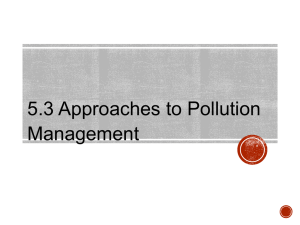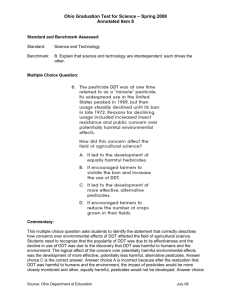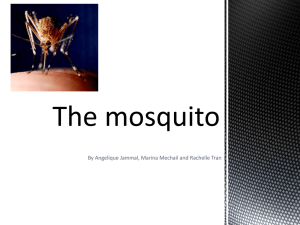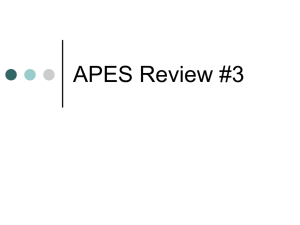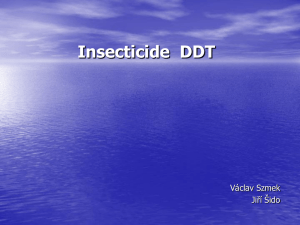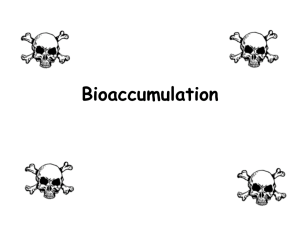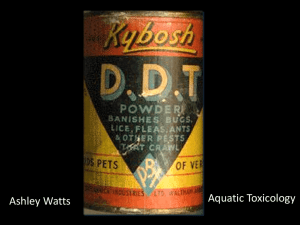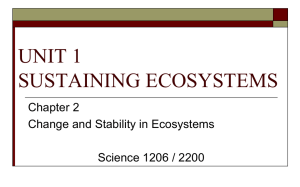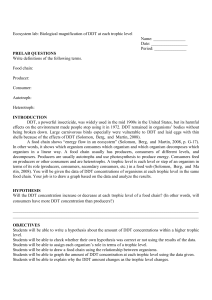The Carbon Cycle and Bioamplificaiton
advertisement
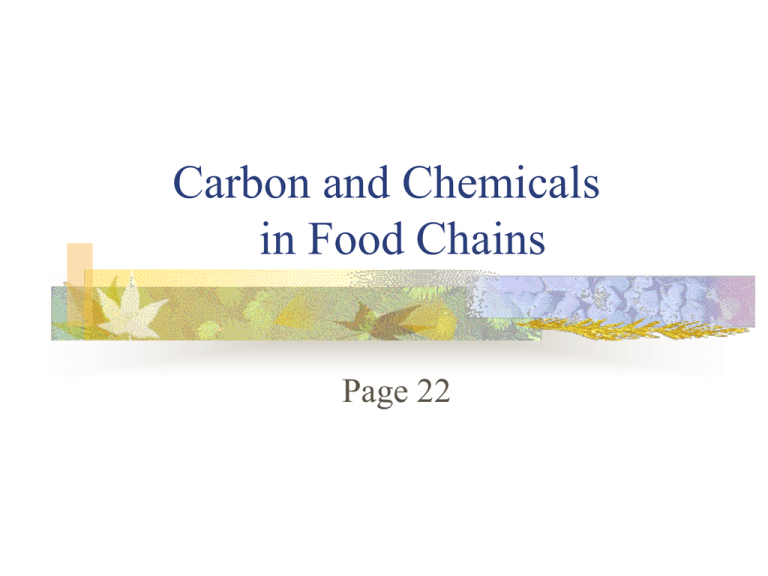
Carbon and Chemicals in Food Chains Page 22 . THE CARBON CYCLE Carbon is the key element of life Carbon does not decrease as it moves up a food chain, rather it is changed and recycled CARBON CYCLE: CO2 Photosynthesis + carbon dioxide Two key steps H2O light water C6H12O6 + O2 glucose oxygen Respiration C6H12O6 + glucose O2 oxygen CO2 carbon dioxide + H2O water Only plants do photosynthesis All cells must do respiration Decomposers break down dead plants & animals, releasing CO2 into the air Fungi decomposing a log. Bacteria decomposing a tomato. Humans burn fossil fuels and release ever more CO2 into the air Car exhaust Industrial fumes Other cycles: There is a nitrogen cycle that includes: (tomorrow) proteins, muscles, wastes and bacteria decomposers There is a slow phosphorus cycle that includes: (tomorrow) bones & teeth, rocks and weathering BIOAMPLIFICATION This refers to an increase in levels of a chemical as you move up a food chain Fish provides a heart-healthy source of protein and contains a host of nutrients including omega-3 fatty acids and vitamin B12. Mercury exists in our waters and subsequently in fish eat. The concentration of mercury in local-waters varies, and therefore, the content in any given fish. Due to bioamplification, fish at the top of the predator chain are far more likely to contain high amounts of mercury than smaller fish. BIOAMPLIFICATION The chemical must be fat soluble, otherwise it is simply urinated out If a carnivore eats an animal, it accumulates all of the chemical in that animal’s fat and retains it for its whole life Animals high in the food chain may accumulate lots of chemical BIOAMPLIFICATION: Example The chemical DDT was sprayed to kill mosquitoes It did kill the mosquitoes, but some chemical ended up on leaves & grass That chemical could enter food chains such as the one on the next slide snake hawk grass frog cricket 1 hawk eats 10 snakes each with 50000 unit • 1 snake eats 20 frogs each with 2500 units • 1 frog eats 25 cricket each with 100 units 500000 units in hawk NO HARM 50000 units in snake NO HARM 2500 units in frog NO HARM 100 units in cricket NO HARM • 1 cricket eats 100 blades of grass each with 1 unit DDT • some blades of grass gets 1 unit DDT when we spray an area Effect of DDT If DDT at 500,000 units does NOT harm hawks, why are we concerned? • DDT above 100,000 units makes egg shells thinner • When the adult sits on these eggs, they break • As a result, hawk and eagle populations dropped greatly in the 50’s, 60’s and 70’s when DDT was used Banning DDT Canada, U.S. and Europe have banned DDT and bird populations have recovered but South America and Africa still use DDT because it is cheap and effective at killing mosquitoes [which carry disease that kills millions of people each year] Other chemicals Other fat soluble chemicals may cause sperm problem in mammals Some chemicals cause baby whales to refuse mother’s milk • New pesticides are not fat soluble and so cause fewer problems. In India, vultures clean-up the carcasses of the dead cows But, 97% of all Indian vultures died between 2002 and 2006 The question was, what can be killing the vultures? The first thing they noticed was that the vultures were sick for only a short time before death Autopsies showed kidney failure. Originally they thought it was a virus, but it did not spread when healthy birds were put with sick birds. They then looked at what vultures ate, and concluded it was a cattle problem. Diclofenac – is an antiinflammatory drug used on cattle Researchers were able to show that Diclofenac shuts down the vulture’s kidneys and in late 2006 they banned the drug
